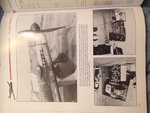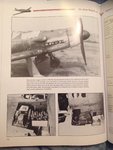The Ta 152B5 was scheduled for production in may 1945. It was essentially an Ta 152C optimised for close support and carried the twin long barrel 30mm Mk 103 canon in the wing roots. Ta 152v56 was the prototype.
i dont think that i ever saw a german fighter with a mk103 or 108 firing through the prop arc, to my knowledge, it was impossible to do because no reliable syncro mechanisme was made for those guns.
as for the 152B, using the 213EG, the gun config were:
fuselage: 2 mg151/20E
propshaft 1xmk108 or 1mk103
wing roots: 2mg151/20E
wings outboard 2mg151/20 or 2mk108 build-in or 2 mk103 in pods.
desription can be found on this board:
Google Image Result for http://img521.imageshack.us/img521/6323/ta152totalxg4.jpg


